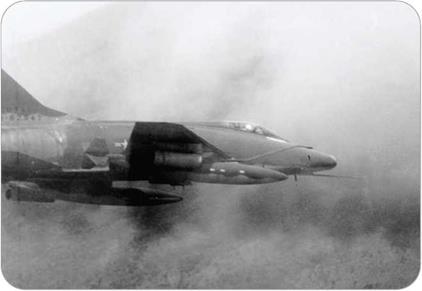Altitude, Temperature, and Mach Numbers
The speed of sound in air depends on the temperature of the air. Sound travels faster through warm air and more slowly through cold air. The air high above the ground is very cold, so the speed of sound is lower there than at sea level.
As an aircraft climbs higher above the ground, the air gets colder. At a height of about 35,000 feet (about 10,700 meters), where airliners cruise, the air is as cold as -76°F (-60°C). At this temperature, sound travels through air at about 660 miles per hour (1,060 kilometers per hour). An airplane flying at, for example, 715 miles per hour (1,150 kilometers per hour) in warm air near
Л
OF SOUND IN AIR
Speed of Sound
660 mph (1,062 kph)
685 mph (1,102 kph) 714 mph (1,149 kph) 728 mph (1,171 kph) 741 mph (1,192 kph) 755 mph (1,215 kph) 762 mph (1,226 kph)
768 mph (1,236 kph) 775 mph (1,247 kph)
the ground is subsonic (below the speed of sound). The same plane flying at this speed at its cruising altitude would be supersonic. To avoid confusion, scientists invented Mach numbers.
An aircraft flying at the speed of sound flies at Mach 1, whatever its actual airspeed is. Mach 2 is twice the speed of sound, Mach 3 is three times the speed of sound, and so on. An aircraft’s Mach number is calculated by dividing its speed by the speed of sound in the air through which it is flying. An airliner such as the Boeing 777 flies at about Mach 0.84. Fighter planes such as the F-16 fly at up to Mach 2. A rare handful of manned self-launching aircraft, such as the Russian MiG-25R, can fly faster than Mach 3.
MACH 1 AT DIFFERENT ALTITUDES
|
——————————– ^——————————-
|











